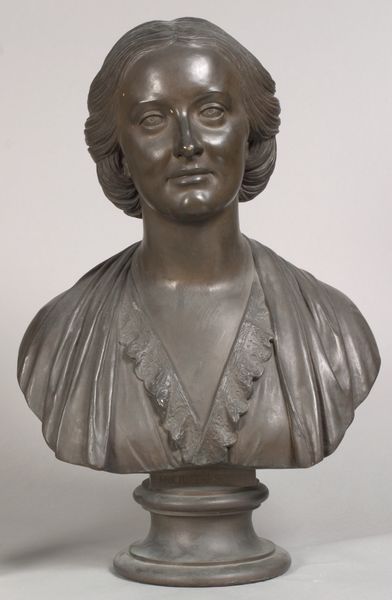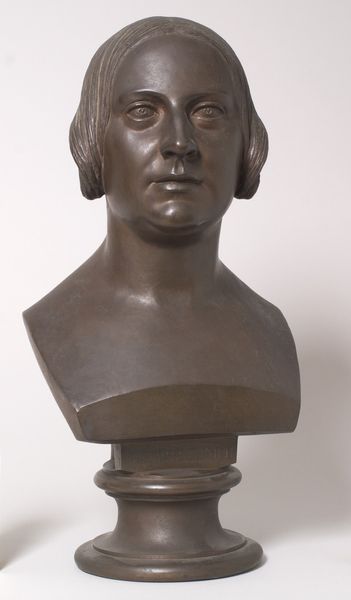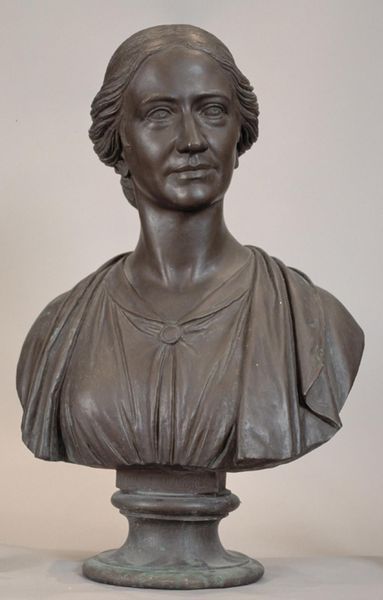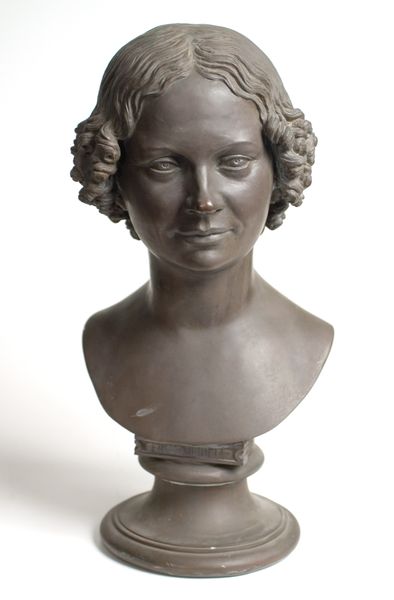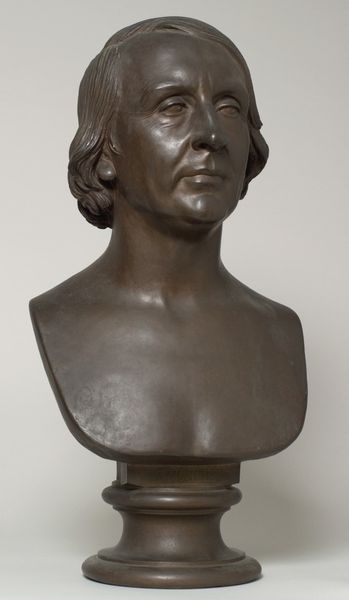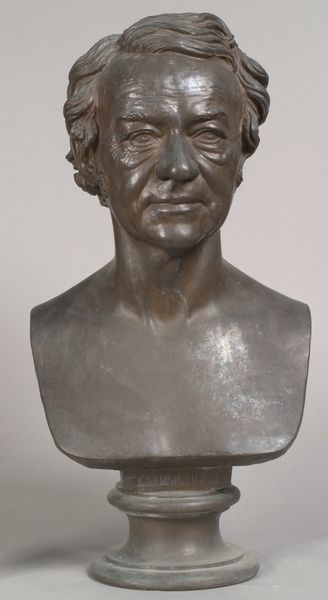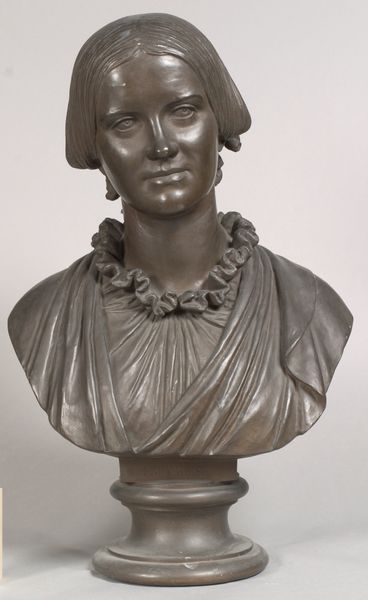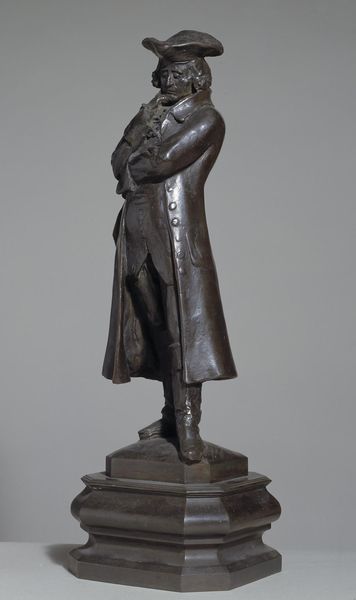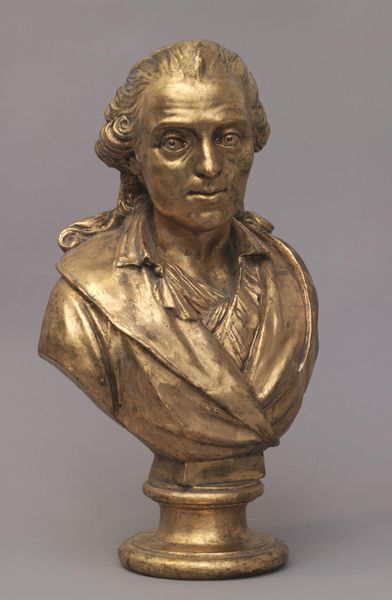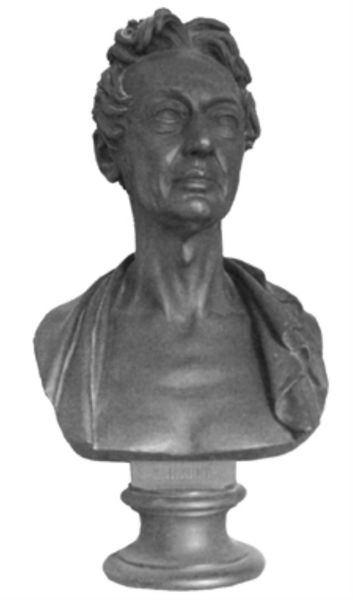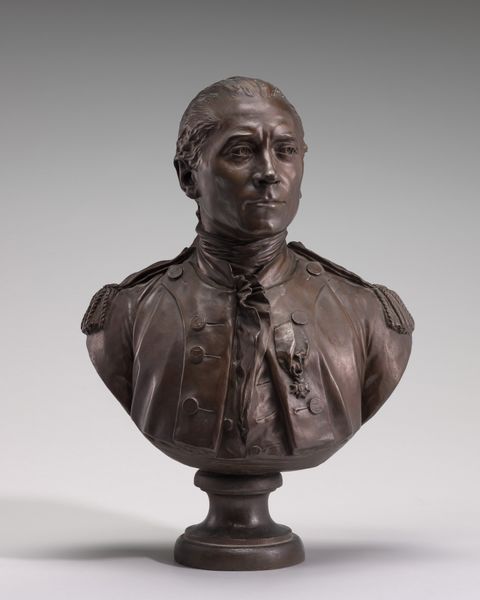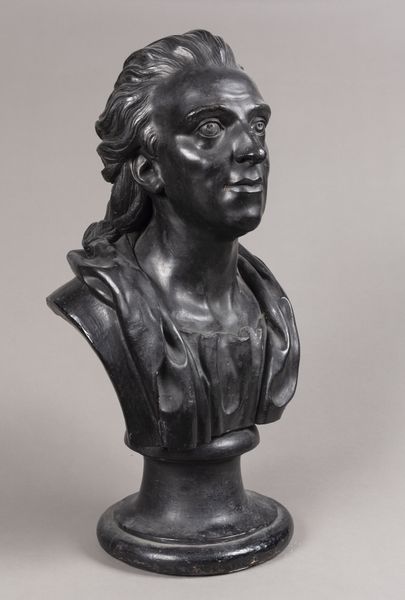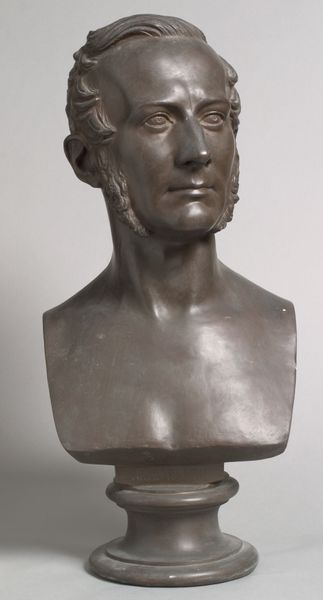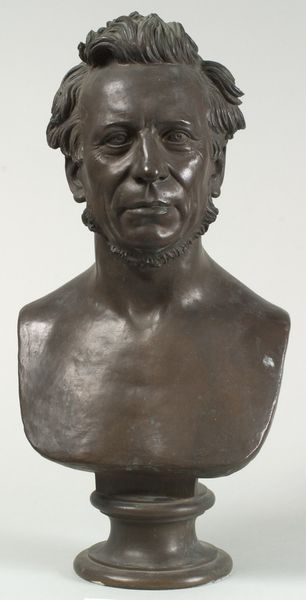
bronze, sculpture
#
portrait
#
neoclacissism
#
sculpture
#
bronze
#
sculpture
#
history-painting
#
realism
Dimensions: 67 cm (height) (Netto)
Editor: This is a bronze bust of Christopher Rudolph Puggaard, sculpted by H.W. Bissen in 1855. It has a somewhat stern, dignified air to it. I’m interested in what Bissen was trying to capture, what symbols are in play here. How do you read this piece? Curator: The bust immediately speaks to the evolving visual language surrounding status and power in the mid-19th century. Notice how the trappings of wealth are downplayed, yet meticulously rendered. What does that more casual attire—the open shirt, the loosely tied cravat—tell us compared to, say, the portraits of nobility a century prior? Editor: It suggests a shift, perhaps, away from inherited status toward self-made success. The understated clothing makes him look less aristocratic, more…bourgeois? Curator: Precisely. The sculpture utilizes what we could call "bourgeois realism" which signaled not only wealth, but trustworthiness and moral uprightness. Look closely at his face – the direct gaze, the slight furrow in his brow. How do those details play into that cultural narrative? Editor: It seems like he is projecting confidence, intelligence… integrity even? Almost like he's meant to embody those ideals. Curator: And how does bronze as a medium itself contribute to that? It’s not marble, traditionally associated with emperors and gods, but bronze carries its own weight of permanence and authority. It speaks to a different kind of enduring legacy. This man of commerce, rendered in lasting metal. Think about the power of material culture at that time, and now. How are wealth and values communicated through images? Editor: That's fascinating. I hadn't considered how the choice of bronze and even his clothes were all working together to create a specific image. I guess symbols aren't always obvious; it is very subtle. Curator: Exactly. Images embed culture. Every detail conveys something about how Puggaard, Bissen and, in turn, Danish society at large wished to project themselves.
Comments
No comments
Be the first to comment and join the conversation on the ultimate creative platform.
